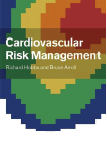My initial reaction on reading this slim, elegant volume was a twinge of professional jealousy which was rapidly replaced by enjoyment. An important feature is that nationalism has been set aside, with authors from Europe, New Zealand, America, Canada and Australia. Perhaps the next edition will embrace the challenges of developing countries as well.
 Editors: Hobbs R, Arroll B
Editors: Hobbs R, Arroll B
Publisher: Wiley-Blackwell, Oxford, 2008
ISBN: 978-1-4-51-5575-5 Price: £26.99
This book is aimed at general practitioners, junior doctors, medical students and nurses. After reading it, these people (and I hope consultant physicians and health planners as well) will be well versed in the principles of total risk assessment and the need to assess the impact of all risk factors in planning the management of the person at risk of cardiovascular disease. The meticulously fair acknowledgment of the major international guidelines in each chapter leads to a certain amount of repetition.
Will the intended audience receive specific guidance from this book as well as a solid grounding in principles? Possibly not, in that all international thresholds and targets are presented but without a very concise summary of the common ground, so that what are often minor differences between guidelines can cause confusion and perhaps frustration – the fault of the guidelines, not of this book.
While behavioural medicine may be regarded as ‘soft’ and qualitative by some, a little more detail on how to assist our patients in lifestyle change would have been welcome. Barriers to guideline implementation are indeed considered but late in the day. Perhaps these issues could helpfully be considered earlier.
I believe that this book is showing us the way of the future – the need for international dialogue to achieve as much common ground between different guidelines as the evidence permits.
I found this book thoroughly enjoyable, and not just because guidelines are ‘what I do’. It can be recommended to all those involved in cardiovascular risk management. If it steers us closer to simplification of risk estimation and management, and in particular to international dialogue, so much the better
